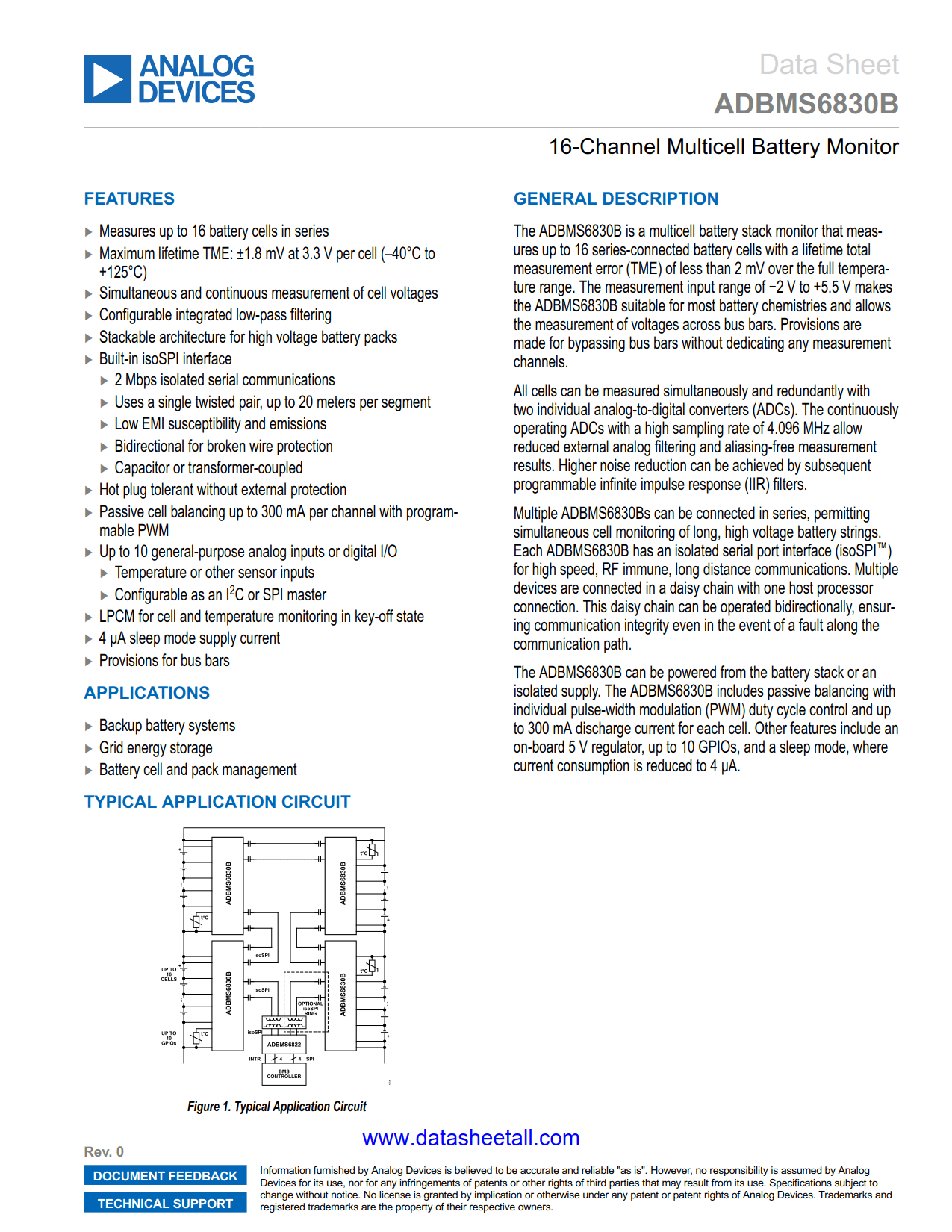
| Part No.: | ADBMS6830B |
| Page: | 83 Pages |
| Size: | 1966 KB |
| Manufacturer: | Analog Devices, Inc. |
| Logo: |  |
| Views: | 0 |
| Update Time: | 2025-02-10 18:41:18 |
| DataSheet: | Download |
| Part No. | Packing | SPQ | Marking | MSL | Pins | Temp Range | Package Description | Buy |
| ADBMS6830BCSWZ | Tray | 119 | 3 | 80 | -40°C ~ 125°C | 80-Lead LQFP_EP | ||
| ADBMS6830BCSWZ-RL | Reel | 2000 | 3 | 80 | -40°C ~ 125°C | 80-Lead LQFP_EP |
The ADBMS6830B is a multicell battery stack monitor that measures up to 16 series-connected battery cells with a lifetime total measurement error (TME) of less than 2 mV over the full temperature range. The measurement input range of −2 V to +5.5 V makes the ADBMS6830B suitable for most battery chemistries and allows the measurement of voltages across bus bars. Provisions are made for bypassing bus bars without dedicating any measurement channels.
All cells can be measured simultaneously and redundantly with two individual analog-to-digital converters (ADCs). The continuously operating ADCs with a high sampling rate of 4.096 MHz allow reduced external analog filtering and aliasing-free measurement results. Higher noise reduction can be achieved by subsequent programmable infinite impulse response (IIR) filters.
Multiple ADBMS6830Bs can be connected in series, permitting simultaneous cell monitoring of long, high voltage battery strings. Each ADBMS6830B has an isolated serial port interface (isoSPI™) for high speed, RF immune, long distance communications. Multiple devices are connected in a daisy chain with one host processor connection. This daisy chain can be operated bidirectionally, ensuring communication integrity even in the event of a fault along the communication path.
The ADBMS6830B can be powered from the battery stack or an isolated supply. The ADBMS6830B includes passive balancing with individual pulse-width modulation (PWM) duty cycle control and up to 300 mA discharge current for each cell. Other features include an on-board 5 V regulator, up to 10 GPIOs, and a sleep mode, where current consumption is reduced to 4 μA.